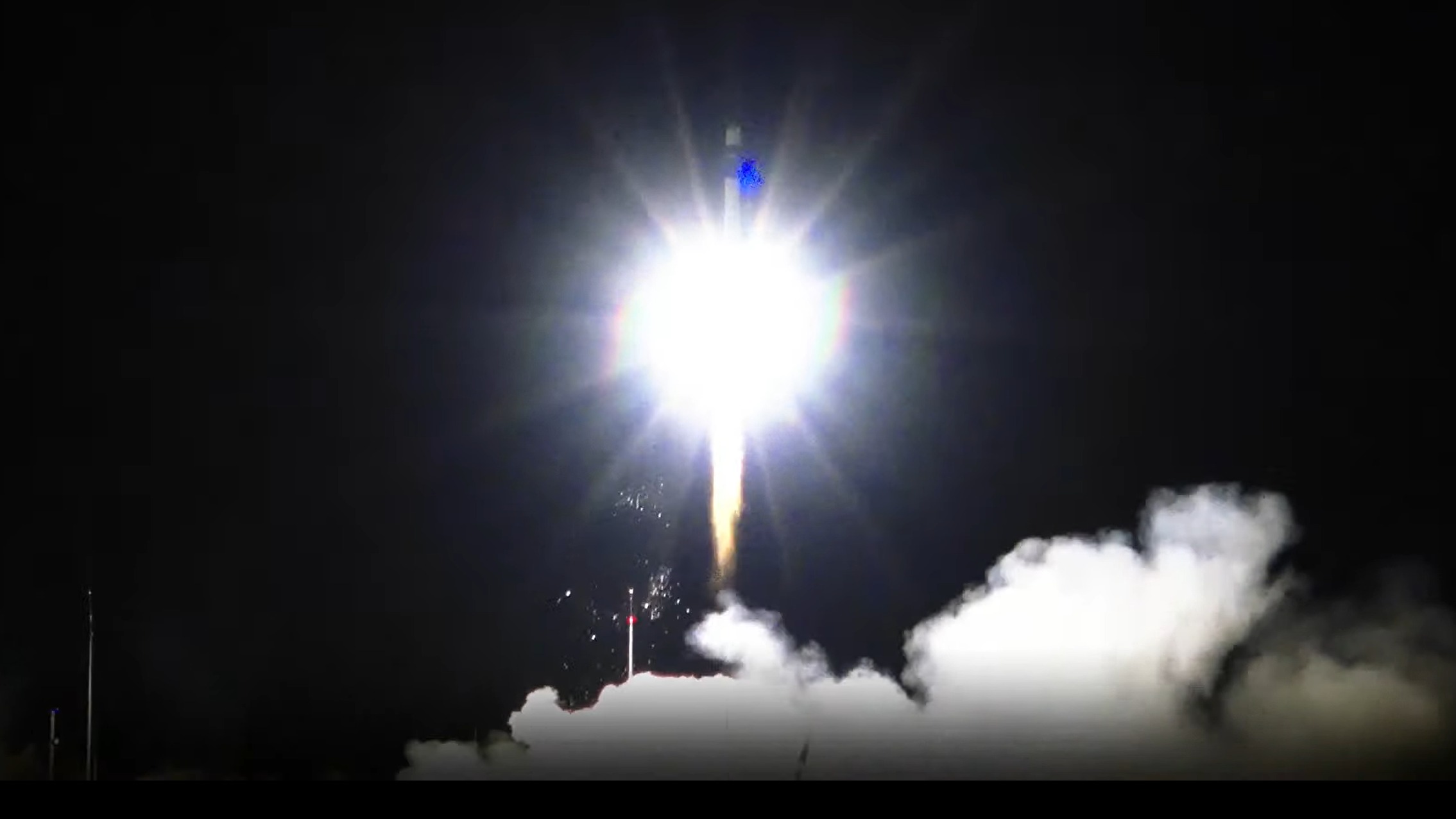Rocket Lab launched a commercial radar-imaging satellite today (March 12) to continue building out a constellation.
An Electron rocket topped with one of Japanese company Synspective's Strix-3 satellites lifted off from Rocket Lab's New Zealand launch site. The launch took place at 11:03 a.m. EDT (1503 GMT; 4:03 a.m. local New Zealand time on March 13), 40 minutes into a previously advertised one-hour launch window.
"It's on its way to space," a Rocket Lab official said during a live broadcast on YouTube. Following the successful first-stage separation, the broadcaster called out, "Done, done and done."
Rocket Lab's broadcast also announced the deployment of the satellite from a "kick stage" roughly one hour after launch, at 12 p.m. EDT (1600 GMT; 5 a.m. local New Zealand time on March 13.)
Related: Facts and information about Rocket Lab

Rocket Lab calls Tuesday's mission "Owl Night Long" in a nod to Synspective's Strix family of synthetic-aperture radar (SAR) satellites, which shares its name with a genus of owls.
The Strix spacecraft "can image millimeter-level changes to the Earth's surface from space, independent of weather conditions at any time day or night," Rocket Lab wrote in an "Owl Night Long" mission description, which you can find here.
Get the Space.com Newsletter
Breaking space news, the latest updates on rocket launches, skywatching events and more!
"Owl Night Long" was Rocket Lab's fourth launch for Synspective. The other three missions for the Earth-imaging company launched in December 2020, February 2022 and September 2022.
Strix-3 is headed for a sun-synchronous orbit (SSO) 348.6 miles (561 kilometers) above Earth, according to Rocket Lab.
Satellites in SSOs see the same patch of ground at the same solar time every day, meaning that lighting conditions are consistent and changes on Earth's surface can be detected more easily. For this reason, these orbits are popular destinations for weather and reconnaissance satellites.
If all goes according to plan, the Electron will deploy Strix-3 into its intended orbit about 54 minutes after launch.
There apparently won't be any action in the downward direction on Tuesday. Rocket Lab is working to make Electron's first stage reusable and has recovered boosters on a number of previous missions. But the company's "Owl Night Long" mission description doesn't mention anything about recovery activities.
This article was updated at 9:55 a.m. EDT to reflect a 40-minute launch delay announced by Rocket Lab, again at 11:10 a.m. EDT for the successful launch, and again at 12 p.m. EDT to reflect the successful satellite deployment.
Join our Space Forums to keep talking space on the latest missions, night sky and more! And if you have a news tip, correction or comment, let us know at: community@space.com.

Michael Wall is a Senior Space Writer with Space.com and joined the team in 2010. He primarily covers exoplanets, spaceflight and military space, but has been known to dabble in the space art beat. His book about the search for alien life, "Out There," was published on Nov. 13, 2018. Before becoming a science writer, Michael worked as a herpetologist and wildlife biologist. He has a Ph.D. in evolutionary biology from the University of Sydney, Australia, a bachelor's degree from the University of Arizona, and a graduate certificate in science writing from the University of California, Santa Cruz. To find out what his latest project is, you can follow Michael on Twitter.









